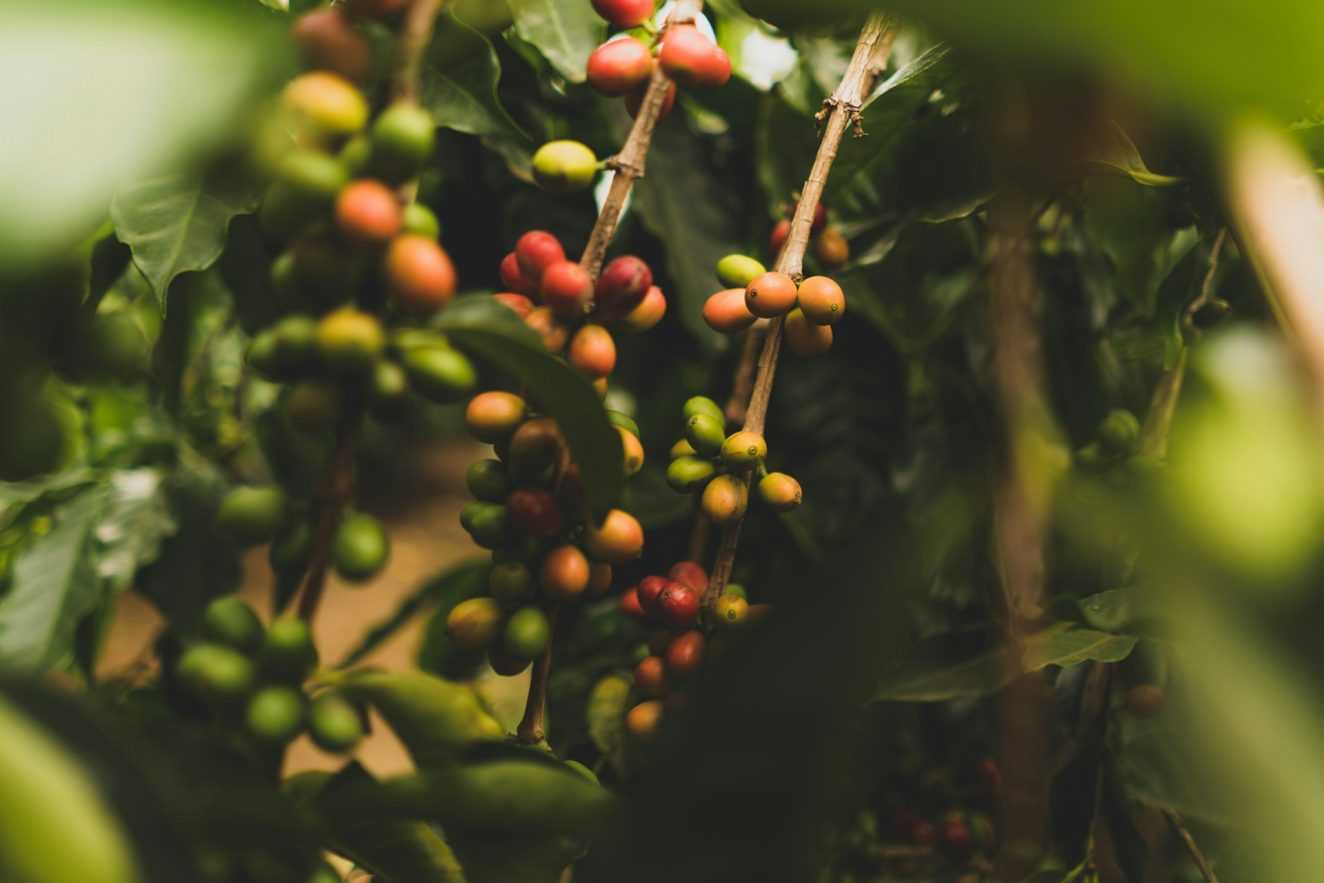Ever thought about having a coffee plant at home? Not only does it add a touch of greenery and elegance to your space, but with some patience, you might just brew your own espresso! Let’s dive into the delightful world of growing and caring for Coffea arabica, the coffee plant.

Why Grow a Coffee Plant?
Coffea arabica is more than just a source of your favorite morning brew. This attractive shrub boasts glossy green leaves and clusters of scented white flowers in early summer. In its natural habitat, a coffee plant can grow up to 8 meters tall. But don’t worry, it’s perfect for growing as a houseplant in the UK or other non-tropical regions.
As a houseplant, the coffee plant remains impactful all year round with its evergreen leaves that have slightly ruffled edges. Once mature, around four years, you’ll be rewarded with highly fragrant white flowers followed by green fruits that ripen to red and then almost black. Inside each fruit are two seeds – the coffee beans. Although you won’t harvest a commercial amount, it’s a fun project that might produce enough beans for a personal espresso!
Coffee Plant Fun Facts
Before we get into the nitty-gritty of growing your coffee plant, here are some fun facts:
- Native Habitat: Coffea arabica hails from tropical areas of Africa and Asia.
- Growth: It needs a warm spot out of direct sunlight to thrive.
- Toxicity: All parts of the coffee plant, except for the beans, are toxic to humans and animals.
Growing Your Coffee Plant: Step-by-Step
1. Choosing the Right Spot
Coffee plants thrive in bright, indirect light. Direct sunlight can scorch the leaves, turning them brown. The ideal temperature range for a coffee plant is 16-24ºC. A conservatory or a bright bathroom is perfect as these spaces provide both the light and humidity the plant loves. Avoid draughts and sudden temperature changes to keep your plant happy.
2. Potting and Repotting
Repot your coffee plant every two to three years, ideally in the spring. Use a loam-based, peat-free compost and move the plant to a container size up each time. This ensures your plant has enough room to grow and keeps the roots healthy.
3. Watering and Feeding
Water your coffee plant regularly to keep the compost moist but not waterlogged. During the growing season (March to September), feed every two weeks with a liquid feed. In winter, when the plant is dormant, reduce watering and feeding. To maintain humidity, place the plant in a tray of pebbles filled with water and mist the leaves regularly.
Pruning Your Coffee Plant
In the wild, coffee plants can reach 4-8 meters over five to ten years. Indoors, you can prune them to a manageable size. Prune in the spring by cutting stems at a 45-degree angle just above a leaf joint. This helps maintain a bushy, attractive plant and encourages healthy growth.
Propagating Your Coffee Plant
You can propagate coffee plants from seeds. Here’s how:
- Soak Seeds: Soak the seeds overnight, but no longer to avoid rotting.
- Sow Seeds: Place seeds on the surface of moist compost and cover with a thin layer of compost.
- Maintain Temperature: Keep at a temperature of 27-29ºC. Seeds can take six to eight weeks to germinate.
- Transplant: Once seedlings are big enough to handle, transplant them to individual pots.
Pests and Diseases
Red Spider Mite
Coffee plants can be affected by red spider mites, especially during the growing season. These mites feed on plant sap, causing leaf drop and mottled leaves. Increase humidity by spraying water and look for fine webbing on the leaves and stems. Biological controls are available if infestations occur.
Xylella fastidiosa
Coffee plants are at risk of carrying Xylella fastidiosa, a bacterium causing dieback, leaf scorch, and plant death. Source your plants from reputable nurseries and ensure they are UK-grown to minimize this risk.
Buying a Coffee Plant
When buying a coffee plant:
- Nurseries: Purchase from reputable house plant nurseries.
- Healthy Plants: Ensure the plant is pest-free and healthy upon arrival.
- Seeds: Alternatively, buy seeds from specialist nurseries and grow the plant yourself.
- Variety: Consider the dwarf variety, Coffea arabica ‘Nana,’ which is ideal for indoor growing and requires less pruning.

Growing a coffee plant is not just about the end goal of harvesting coffee beans; it’s about enjoying the process and the beauty it brings to your home. With glossy leaves and fragrant flowers, it’s a year-round joy. And who knows? With the right care, you might even sip on a homemade espresso one day!





